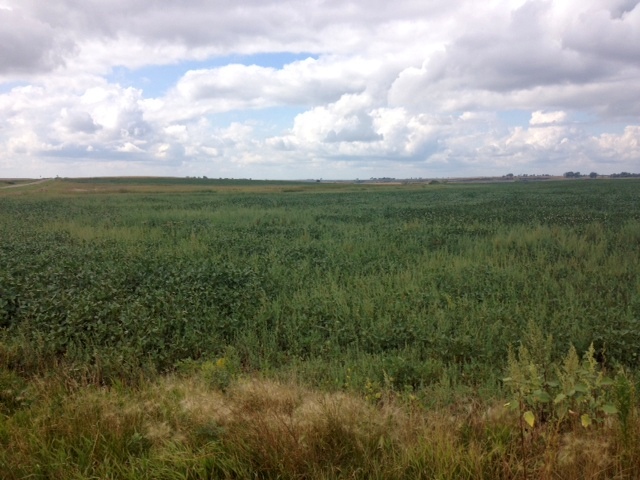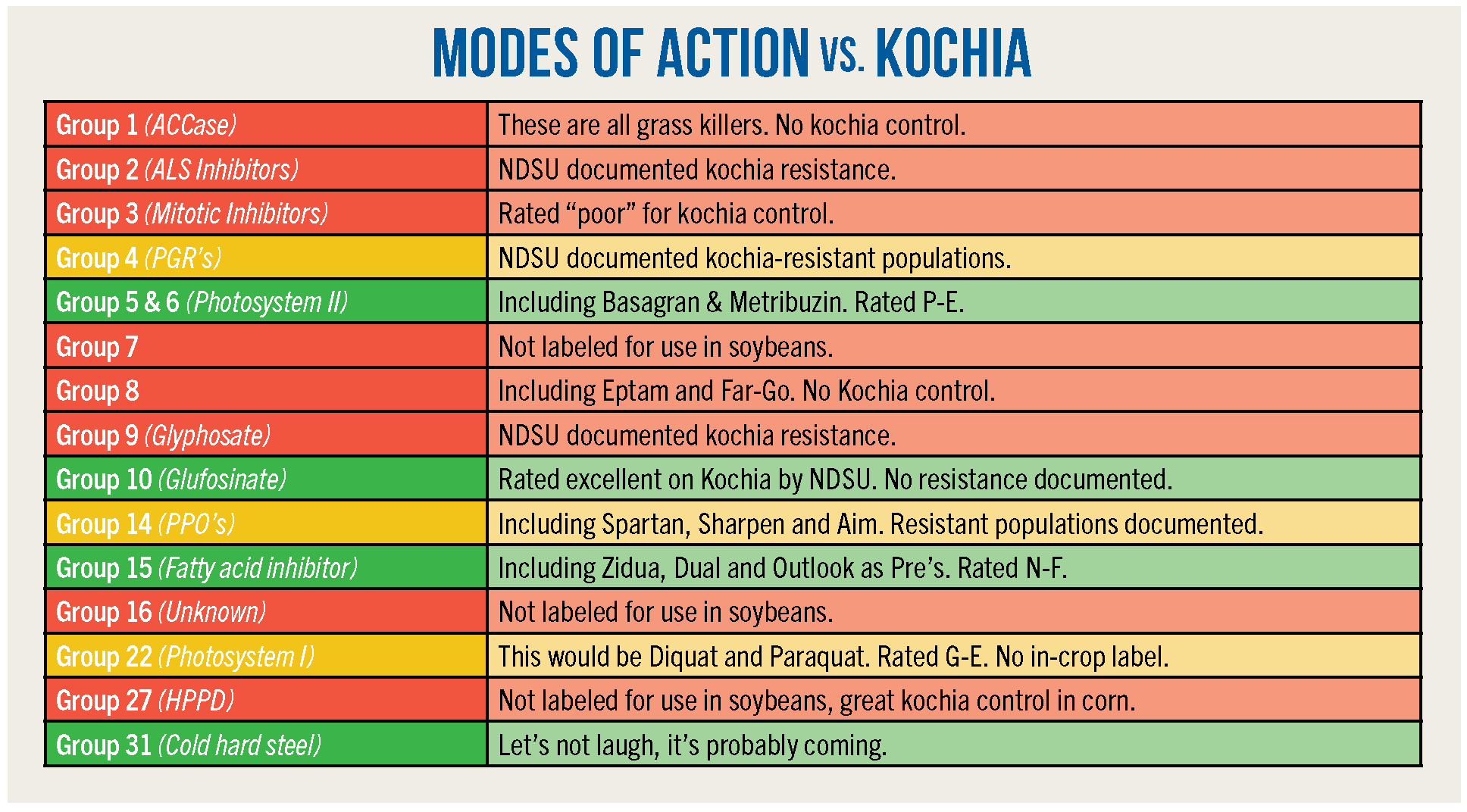We’re Running Out of Options: Kochia Control In Soybeans

Kochiaweed, firebush, the devil’s flower, Satan’s tumbleweed. Whatever you call it, chances are that if you have it on your farm, you’ve developed a special kind of hatred for it, and for good reason.
Controlling kochia gets more difficult each season. If you look at a herbicide chart, you can count about 13 different modes of action (including group 31, “Cold Hard Steel”). Aside from the introduction of the group 9 herbicide, glyphosate, in the mid 1990s, the last time a mode of action was introduced that brought a big change to agriculture was in the early 80s. 60% of the herbicides today resulted from modes patented between the 1950s and 80s. Below, I’ve broken down the current modes of action and their efficacy on kochia in soybeans as we know them today.
Kochia uses a C4 photosynthetic pathway, like corn and Palmer amaranth, which allows it to increase and be more drought tolerant than plants that use the C3 pathway. Kochia seeds can emerge in the spring with as little as 50 GDUs and in temps as low as 40 degrees. They can emerge from depths of over three inches and create a rooting depth of sixteen feet. However, the good news is that 95% of seeds germinate within the first year and 99% within the first two years. So, if you can control it for two years and prevent new seeds from being deposited, you can put a damper on it. Easier said than done.
If we look at the green and yellow highlights in the chart below, aside from the Group 4s, they’re all pre-emerge or non-systemic (coverage) herbicides. We’ve worn out our easy button; we can no longer assume that a pass of glyphosate and dicamba in-season will control kochia.

To make matters worse, work by Dr. Brian Jenks has found reduced efficacy by Aim (carfentrazone) and Sharpen (saflufenacil) on emerged kochia in some western ND populations.
Kochia control is only going to get more difficult, as more regions are losing chemical control options every year. Be vigilant, make timely applications, and follow up after harvest!
My recommendation: Get a pre-emerge herbicide on and scout your fields to spray that first flush of kochia before they’re too big. Stop the planter if you have to. Sulfentrazone, metribuzin and gramoxone combinations have had good results as a pre-emerge. And if you’re not willing to stop the planter in the spring, try flumioxazin (Valor) in the fall.











